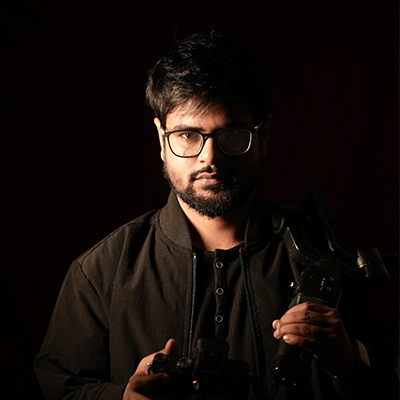

(Filmmaker, 8+ Years of Experience)
Side lighting in movies helps create strong emotion. It makes faces look three-dimensional. It also reveals inner conflicts in characters. This technique is simple and powerful. It works with small lamps, windows, or even phone lights. It does not require expensive gear. Side lighting in movies is popular because it looks dramatic and draws the audience in. It also works well in any filming style.
Side lighting in movies is when light hits a subject from one side. This creates highlights on one half of a face or object. It also puts the other half in shadow. Many filmmakers use this approach to add depth to shots. Imagine a single light shining on an actor’s left side. The right side stays dark. This contrast makes the actor seem more real. It pulls viewers into the scene.
According to No Film School, side lighting is one of the easiest ways to shape mood in low-budget filmmaking.
People use side lighting in movies to bring out emotion. A beam of light from the side can show fear, hope, or tension. It can hint at a secret or a split in a character’s mind. It also emphasizes features like cheekbones or jawlines. This makes characters stand out on camera.
Think of a scene in a dark room. A hero stands near a window. The sunset shines through the blinds and hits only half of the hero’s face. The other half fades into shadow. This simple detail shows the hero’s struggle. It also adds mystery.
Side lighting in movies makes a scene look realistic. Real life rarely has even lighting. A street lamp often hits a person’s face from the side. That angle adds depth to eyes and cheeks. It also makes everything look more lifelike.
Imagine filming in a living room. A small lamp sits on a coffee table. It lights one side of someone’s face. The other side is darker. This setup feels more authentic than a bright overhead light. The viewer feels like they are in the same room.
Side lighting in movies can reveal inner battles. One side of a face is bright. The other side is dark. This simple trick can show hope on one side and fear on the other. It can hint at a character who is torn between two choices.
Picture a spy in a hallway. A lamp flickers on the left wall. The spy’s face glows on the left side. The right side drifts into shadow. This look tells us the spy is not fully good or bad. The spy is in a gray area of morality.
Many low-budget filmmakers use side lighting to hide flaws. A strong side light and dark shadow can block out boring walls or cheap props. It keeps the focus on the actor’s face. Viewers pay attention to the story, not the set.
In a quick shoot, place a lamp beside the subject. The shadows cover the dull background. The scene appears dramatic. It also looks more expensive than it is.
Think of a campfire at night. Only half of each face around the flames is visible. This real-life moment proves that side lighting feels natural. People see it every day when sunlight streams through a window in the late afternoon.
Film audiences like scenes that feel true to life. Side lighting in movies captures the way we experience light in the real world.
You can create side lighting with simple tools. You do not need a professional studio. A phone flashlight or a table lamp can work. Here is one easy method.
Check how the shadows fall. Move the lamp for different angles. If you want more drama, reduce any extra light. If you want a softer look, bounce the light off a white surface. Try each option to see which look you prefer.
Imagine you are filming a short mystery scene. The main character sits at a desk, worried about a secret letter. You have a small lamp on the left side of the table. The character’s left cheek and left eye glow softly. The rest of the face is in shadow. This setup adds tension. The viewer wonders what the character is hiding. That is the power of side lighting in movies.
Side lighting in movies is a simple way to add depth and emotion. It helps characters come alive and hides dull backgrounds. It also feels natural because we see side light in real life. You do not need fancy gear to achieve this look. One lamp can create a world of difference. Experiment with angles and shadows. You will see why people use side lighting in movies to draw audiences in and boost the mood of every scene.

Teaching life’s lessons, revealing hidden truths, and making meaningful videos that inspire and educate.